
Intrigued by the blob?
Good news: I can answer ALL your questions!
By Mylène, biologist and blob specialist
Questions
- What is a blob?
- Is the blob an animal or a plant?
- Is the blob an extraterrestrial?
- Who discovered the blob?
- How fast does the blob move?
- What does the blob eat?
- How to kill a blob?
- How do blobs grow?
- Why is the blob immortal?
Overview
What is a blob?
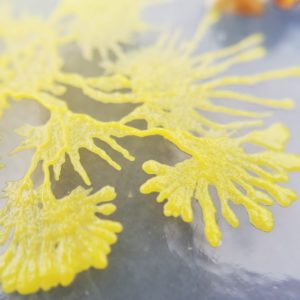
The blob (also known as “slime mold”) is a very primitive organism: it’s made up of a single cell. This cell can grow indefinitely, but never divides. Despite its extremely simplified organism, the blob is able to move, eat and grow, and possesses astonishing physical and behavioral capacities. It is, for example, an expert at finding the shortest path through a maze or adapting to hostile conditions.
Is the blob an animal or a plant?
The blob is neither an animal, nor a plant, nor even a fungus…
It belongs to the amoebozoan kingdom, and more specifically to the class of myxomycetes, a relatively unknown group of slimy organisms!
Is the blob an extraterrestrial?

Unlike the creature in the 1958 film The Blob (and its 1988 remake), the real blob is not an alien. It’s estimated to have been present on Earth for 500 million to 1 billion years, long before the continents separated.
So it’s one hell of an earthling!
Who discovered the blob?

The blob was first identified in 1822 by the scientist Lewis David von Schweinitz. Long unknown to the public, it has never ceased to amaze scientists around the world. For example, it can find the shortest path through a maze, or learn to behave more efficiently in an initially hostile environment. It can also transfer its knowledge to other blobs by merging.
The blob’s powers
How fast does the blob move?
The blob moves by crawling on itself. It is fastest when searching for food: 4cm/hour! It then forms magnificent and fascinating tree-like structures. You can observe them thanks to videos played in accelerated “time lapses”.
What does the blob eat?
In laboratories, scientists feed the blob oats. Oats are cheap and easy to preserve. It can also eat a wide range of vegetables, but doesn’t like meat. It’s up to you to try it out!
In nature, the blob feeds not only on fungi, but also on the bacteria it finds on the surfaces of the objects it roams over. It’s a true cleaner, but also a recycler: the nutrients it releases behind it can be directly assimilated by plants.
The blob is essential to maintaining forests and their biodiversity. Studies have even shown that certain blob species, such as Fuligo septica, are capable of storing heavy metals and detoxifying soils. Some scientists are now investigating the blob’s ability to accumulate radioactive waste.
How to kill a blob?
If the blob is wise enough to alternate between life and dormancy, it becomes immortal. But this immortality only covers “biological” death.
Although the blob no longer fears the passage of time, it remains a vulnerable creature. Predators, accidents and disease will put an end to his immortality just as effectively as they do to ordinary mortals.
How do blobs grow?
When two blob spores meet to form a blob, the baby blob is tiny and very fragile, just a few micrometers long. It will take several weeks for it to grow and become visible to the naked eye.
In your The Blob Lab set, your blobs are already a few centimetres long. If you feed them well, they can double in size every day. When your blobs reach the size you want, you can easily keep them at the same size by cutting them in half every day. The removed half can be frozen and discarded, or returned to a dormant state.
Why is the blob immortal?
To understand how to live forever, we need to understand what prevents us from doing so and causes us to age.
Understanding genetic mutations
Each of our cells contains one or more nuclei with DNA: a long sequence of instructions that enables the body to function. Every day, our nuclei divide to form new cells, and the DNA is duplicated.
In the process of recopying this code, because of its complexity, an error can slip through. With each new replication, there’s a risk that errors will be added to the previous ones: these are mutations. Over time, these deleterious mutations prevent the organism from functioning properly, resulting in aging. An unenviable superpower compared to those of the X-men…
For human beings
The human organism has a few mechanisms for detecting and correcting some of these errors, but they are not sufficiently effective, and mutation leads sooner or later to death.
For the blob
The blob has just one cell, but several hundred or even thousands of nuclei. Each time the blob grows, new nuclei are formed. The blob is therefore subject to the same aging process as humans. But when the blob dries out and forms a sclerotia, it allows its deleterious mutations to be reset: everything is corrected and becomes perfectly operational again.
Comment ça marche ?
For now, the mystery remains unsolved. But scientists are working hard to understand it. In the meantime: if you certainly don’t yet understand how it works, there’s nothing to stop you from putting the regeneration machine to work!
➡ Find out how to trigger the blob’s biological immortality with The Blob Bible.
The blob in the wild
How to find a blob?
Finding a blob in the wild requires a bit of luck and a good pair of sneakers, but it’s possible.
Go for a walk in the forest, preferably after a rain, and observe the dark, damp interstices of tree stumps. I hope you like little bugs!
If you can’t find an active blob in the forest, you can also bring back a few branches of dead wood and immerse them in a basin of water kept in the dark.
You’ll need to be patient (and very lucky), but after several weeks, a small blob may emerge from the damp wood. These will probably be spores that have had a chance to merge and spawn a brand-new blob. But beware: at this stage, the little blob is still very fragile. Beginners beware.
How big is the world’s largest blob?
The largest blob discovered in the wild was in the Appalachian Mountains in the USA, stretching over 1.3 km (0.62 miles)!
How many species of blob exist on Earth?
It’s estimated that there are around 1,000 species of myxomycetes. Not all have the incredible capabilities of Physarum polycephalum.
To make sure you get the blob that fascinates scientists the most, order yours here at The Blob Lab. The species and country of origin of your blob are certified.
Experimenting with the blob
How to clone a blob?
To clone a blob, simply cut it in half. Each of the two parts will become a viable, independent blob.
Is the blob dangerous?
Unless you live in a home that is both warm and humid like a rainforest and dark like the underside of a stump, there’s no danger of you having to fight back against a blob invasion in your home.
Properly fed, the blob will remain peacefully inside its box. If you forget to feed it for too long, it may try to escape, but given the absence of humidity, your blob will only travel a few centimetres outside its box before turning back, sporulating or going dormant again. Not much of an invasion, then.
Does the blob feel pain when cut?
The blob has no nervous system. So it doesn’t feel pain. Furthermore, when a blob is cut, its cytoplasm coagulates in less than 2 seconds, and after just a few minutes, healing is so advanced that it’s hard to tell it’s been cut.
Scientists are very interested in this ability, as they seek to isolate the enzyme responsible for this fast coagulation in order to use it in human treatments.
Does the blob dislike light?
Indeed, the blob tends to avoid exposure to sunlight. However, it can tolerate light exposure, if not too intense or too prolonged. Under indirect light, the blob can withstand a daily exposure of around an hour without damage. So there’s no need for a darkroom: you have all the time you need to observe and care for your blob.
But beware: if you leave the blob exposed to light for too long, it may come to a standstill and turn black and dry. Has it burned out?
Can I eat a blob?
Some indigenous tribes eat blobs. To tell the truth, blobs aren’t really that good; they have a bland taste vaguely reminiscent of mushrooms and damp dust. No allergic reactions to Physarum polycephalum have yet been reported. However, we don’t know the real effects of eating it, so we advise against ingesting blob of any species.
If you can’t taste blob, smell it! Read the following question 👇
What does blob smell like?
When Physarum polycephalum is healthy, it emits a pleasant exotic fruit scent similar to plantain or a “flowering mushroom” odor. The smell of Badhamia utricularis is also appreciable but more discreet, I’d describe it as “sweet smoke”. Other species can release less flattering scents that are difficult to describe.
Species misidentification by amateur sellers is commonplace. To avoid unpleasant surprises and to be sure of the species you’re buying, order your blobs from expert sellers.



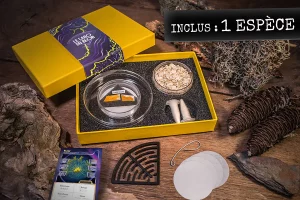
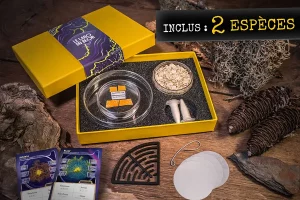
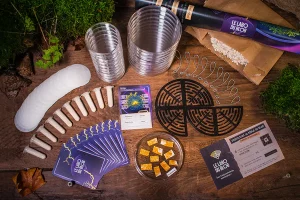
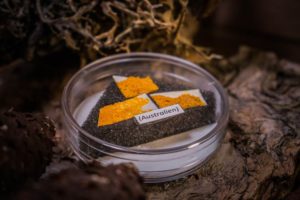

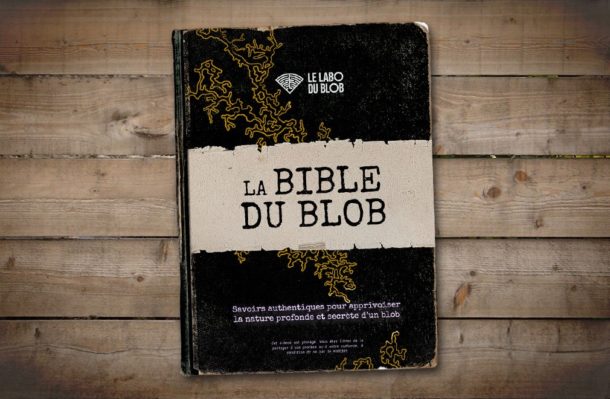
0 commentaires